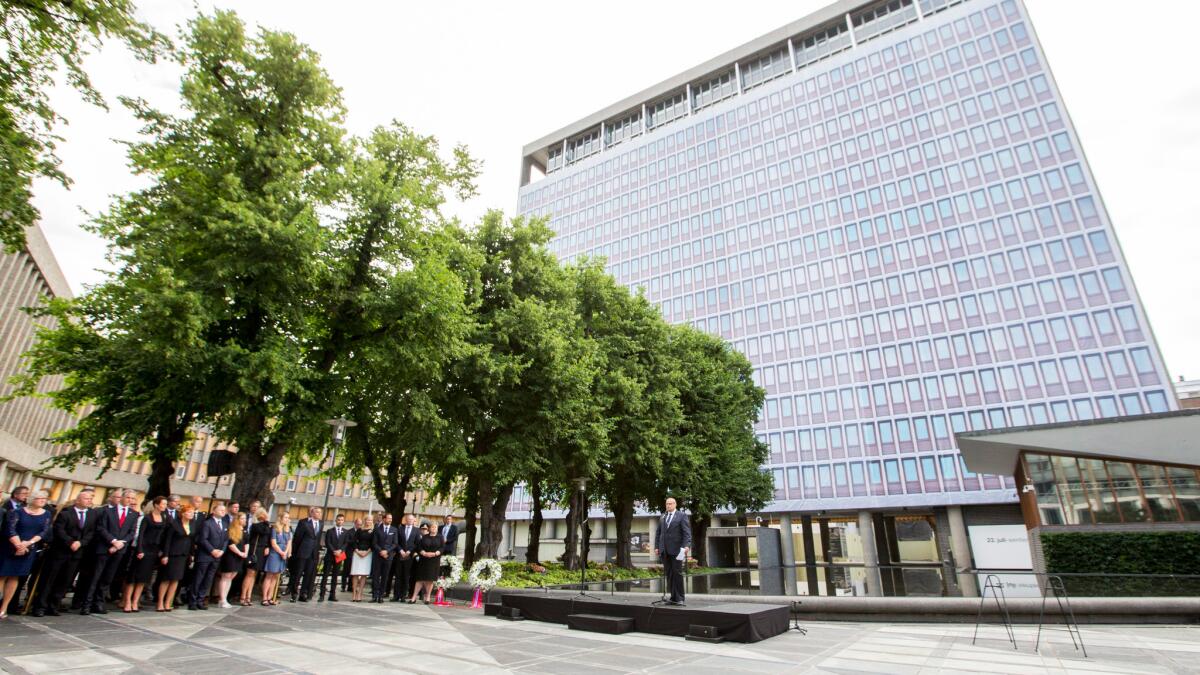Op-Ed: We adjust for population with murder rates. Why not for mass shootings?

- Share via
Many believe that the United States is unique in terms of mass public shootings. Even after the attacks last November that left 130 dead in Paris, President Obama had the gall to claim, “We are the only advanced country on Earth that sees this kind of mass violence erupt with this kind of frequency.”
It fits the narrative, as Hillary Clinton said recently, that our mass public shootings “are rooted in the much too readily available weapons of mass killings, usually assault weapons.” If the U.S. would only adopt the types of gun control laws that exist in other countries, this problem would supposedly go away.
We shouldn’t let Obama and Clinton’s vague impressions dictate policy.
But we shouldn’t let Obama and Clinton’s vague impressions dictate policy. To get a handle on how the U.S. really compares to the rest of the world, what’s important to know is whether Americans are more at risk of dying in a mass public shooting than foreigners. And to find out, we need to adjust for population, just as we do for “ordinary” murder rates. (It’s not illuminating to compare the raw number of homicides in a big city like Los Angeles and some small town.)
Traditionally, the FBI defines a mass public shooting as four or more deaths in a public place that are not part of some other crime, such as a robbery. That definition tries to pick up on the sorts of cases that rivet our attention. Shocking events — school or nightclub shootings – where the purpose is to kill lots of people and generate lots of media attention.
Along with several colleagues, I compiled a list of these cases in the U.S and the European Union, including the United Kingdom. We relied on Nexis and other news aggregators as well as national police reports and the University of Maryland’s “Study of Terrorism and Responses to Terrorism.”
Using the traditional FBI definition, the EU and the U.S. each experienced 25 mass shootings during the first seven years of Obama’s presidency (January 2009 to December 2015).
See the most-read stories this hour »
The rate at which people were killed was virtually the same: 0.083 per million people in the EU versus 0.089 per million people in the U.S. But the injury rate in the EU was more than twice as high: 0.19 versus 0.087.
If you compare the U.S. to individual countries in Europe over the same time period, the U.S. had the 11th highest fatality rate. Because of Anders Breivik’s 2011 attack at a summer camp, Norway had the top spot — 1.9 per million people per year. This rate was 21 times higher than that of the U.S. But other advanced countries such as France, Switzerland, Finland, Belgium and the Czech Republic also came in above the U.S.
Looking only at frequency of attacks — as Obama seems wont to do — while still adjusting for population, the U.S. came in 12th, with 0.078 per million people.
Compared to the rest of the world, moreover, the U.S. and Europe are quite safe from mass public shootings. In Russia and elsewhere, struggles over sovereignty have led to a large number of devastating attacks. For instance, the 2004 Beslan school siege— carried out in the name of Chechen independence — claimed 385 lives.
Even if we exclude such killings, we still find that the U.S. is relatively safe. Of the 25 worst mass public shootings from January 1970 through June 2016, only one occurred here: The attack at the Pulse nightclub in Orlando, Fla., that left 49 people dead. Ten occurred in Nigeria, including a 2014 Boko Haram strike in which 300 people were killed. At the bottom of the list is the Port Arthur shooting in Australia, in which 35 people were killed.
Attacks by Boko Haram in Nigeria, Lashkar-e-Taiba in India, Lashkar-e-Jhangvi in Pakistan and Al-Shabaab in Kenya may seem different in kind than shootings in the West — but they’re not. Just like the Islamic State-inspired shootings in Orlando and Paris, they’re examples of radical Islamist terror. Similar targets were struck using similar weapons by terrorists with the same goals.
We should also bear in mind that guns are not the only tools of mass killing. A man in Nice recently killed 84 people with a truck.
In the U.S., by far the worst mass murder at a school was carried out with dynamite in 1927. That attack left 45 dead and 58 injured. The 1995 Oklahoma City bombing killed 169 people; the 2013 Boston Marathon bombing killed three and injured 280. Of course bombings are rare in the U.S., but not abroad. From 2009 to July 2014, Russia saw 0.24 annual deaths per million from bombings with four or more fatalities. That rate was almost 2.7 times higher than the death rate from mass public shootings in the U.S. during the same period.
Obama has changed the gun control debate by repeating claims over and over again until they become accepted facts to many people. The media absorb and amplify these claims, reinforcing the idea that America would be safer if only it were more like Europe. That’s not the case.
John R. Lott Jr. is the author of “The War on Guns.” He is president of the Crime Prevention Research Center.
Follow the Opinion section on Twitter @latimesopinion and Facebook
MORE FROM OPINION
We adjust for population with murder rates. Why not for mass shootings?
Why borders matter — and a borderless world is a fantasy
Are we raising a generation of nature-phobic kids?
A cure for the common opinion
Get thought-provoking perspectives with our weekly newsletter.
You may occasionally receive promotional content from the Los Angeles Times.






